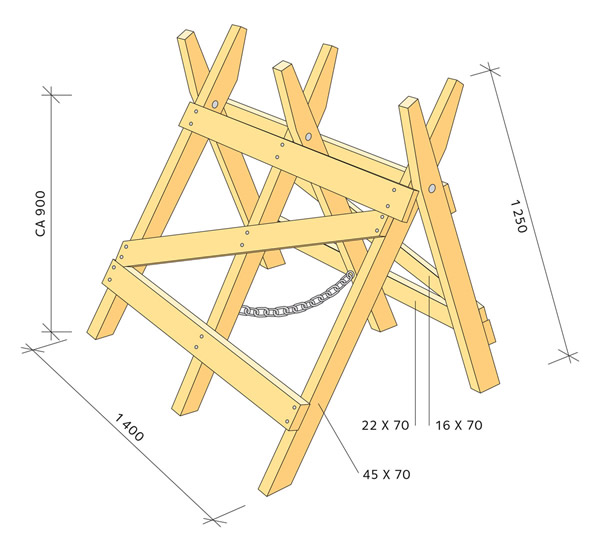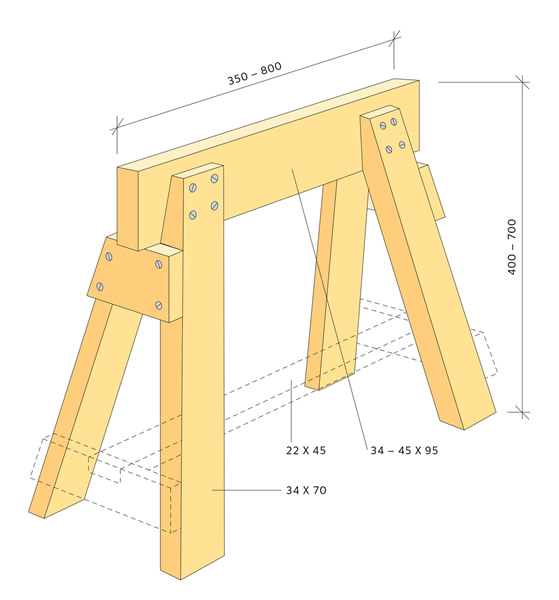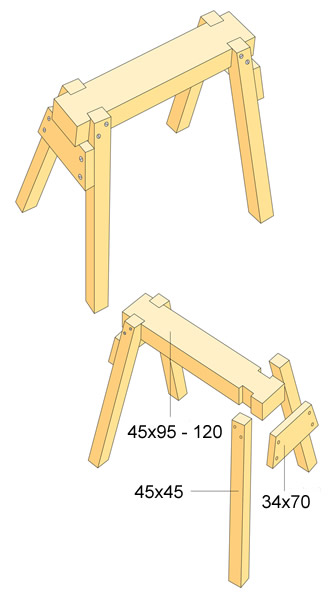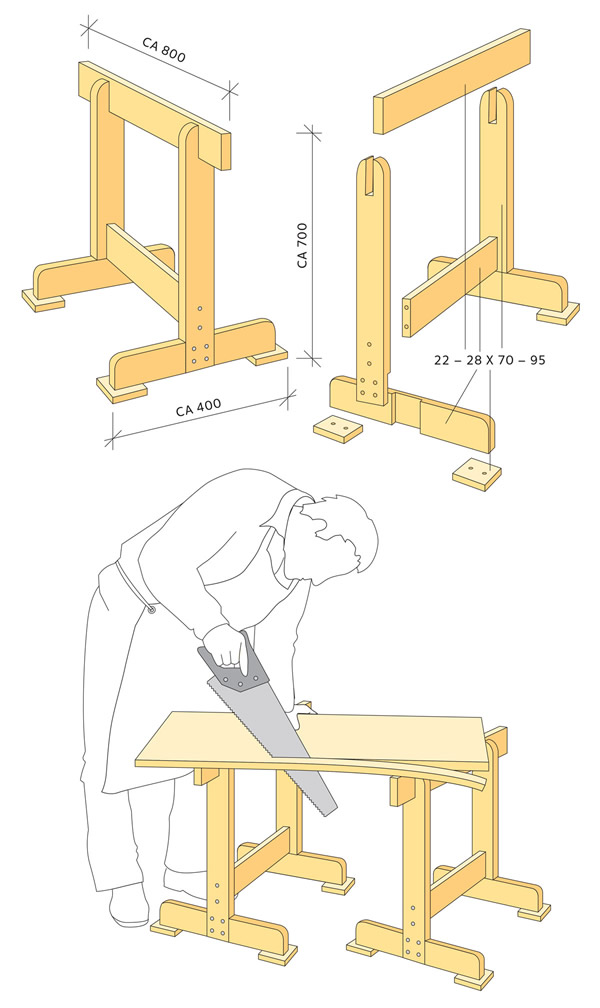Trestle
Material Selection
Use pressure-treated wood to Use Class 4 for pieces in ground contact; otherwise Use Class 3u.
Trestle Legs For Benches & Tables
Here are two traditional trestle types used outdoors as a table or bench legs. Two or three trestles 400mm high and a strong plank 45 x 170mm make a sturdy garden bench. A plank and a pivot make a children’s seesaw.
On the first trestle, the legs are angled at the top so that the legs are splayed. If the trestle is over 700mm high, you’ll need extra braces to reinforce the bottom. The second trestle has the legs jointed into the top bar.
It is important to mark and cut the top of the legs carefully, to get the shape of the trestle right. Use a set square. Saw two cuts and remove the wood with a flat chisel. File smooth.
Surface with alkyd oil paints or wood oil for outdoor use. The feet suck up moisture from the ground, so it’s a good idea to soak them for a number of days in jars of wood preservative until the wood is saturated.
Two-Legged Trestle
This trestle works well in many situations. A loose table top and two trestles make an extra table for all sorts of different activities – a drawing table, a table for sewing and cutting, a dining table for extra guests, or a workbench.
Use planed pine, 22-28mm x 70-95mm. A suitable height is about 700mm and width, 800mm. Use 400mm stretchers at the bottom.
First, cut all the elements. Use compasses or a suitable round object to give you the round shapes. Cut out with an electric jigsaw. Alternatively, you can round off an angle of 45 ° cut with a fine toothed saw. Make slots for the cross bar and half-in-half-joints at the bottom. Don’t make the slots too deep, or the screws won’t hold. Use small threaded bolts with nuts and washers. Fix the cross bar between the posts with long thin wood screws. Screw all parts together.
Sawhorse
Screw or nail the parts together. Use carriage bolts, with washers and nuts to hold the three pairs of legs together so they can be folded. Place the upper horizontal boards (22 x 70mm), at a height to stop the legs opening beyond the required position. Alternatively, a thin chain between the centre legs fulfills the same function.




